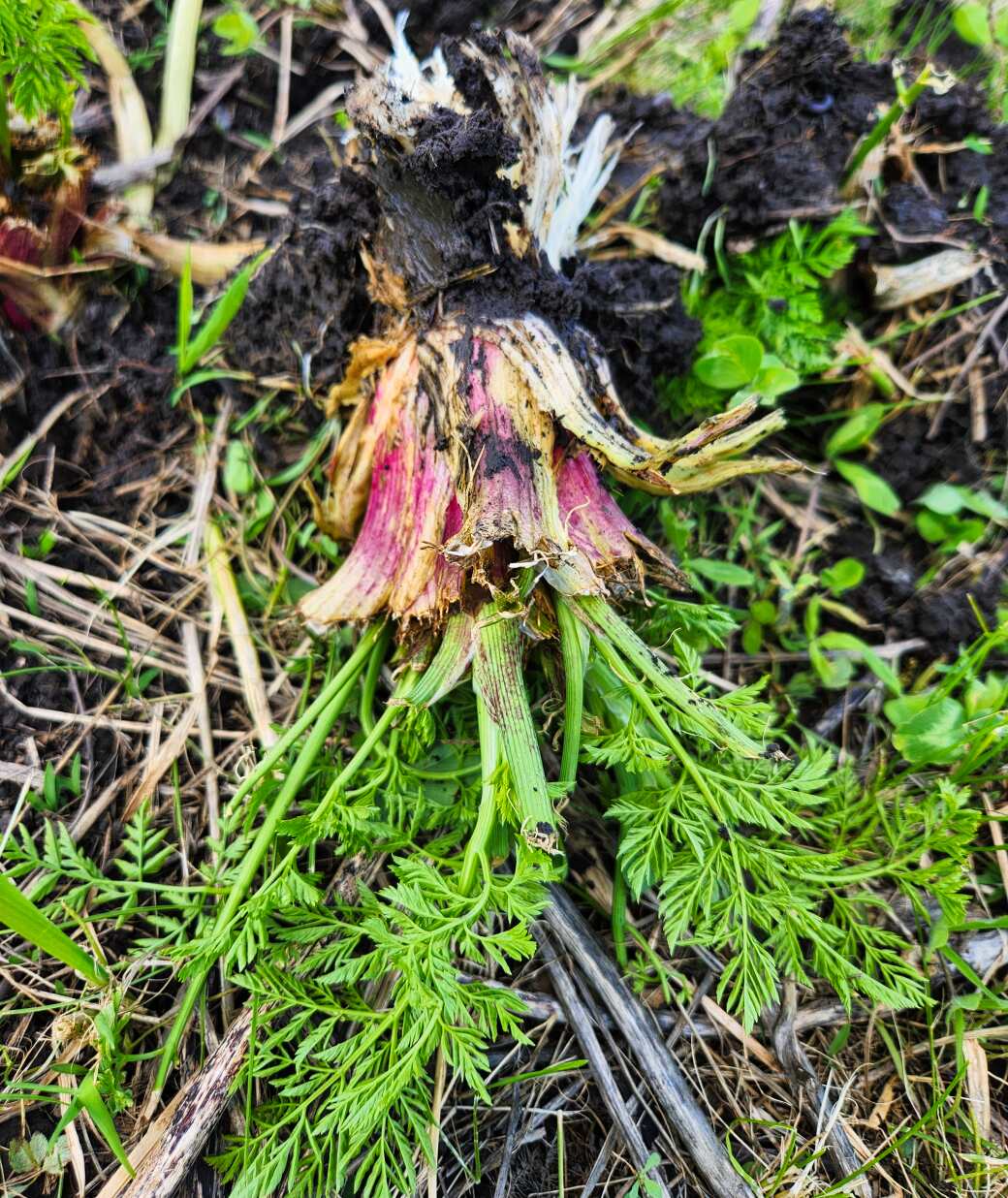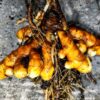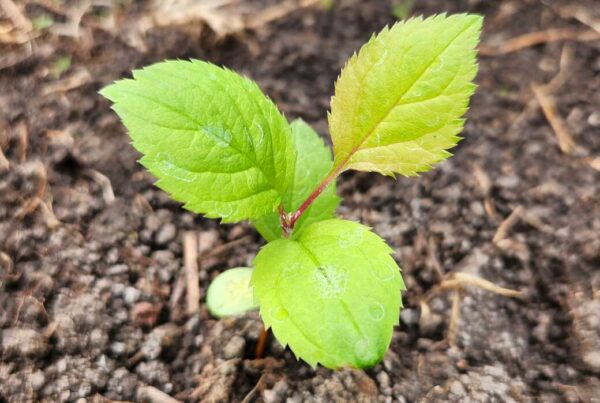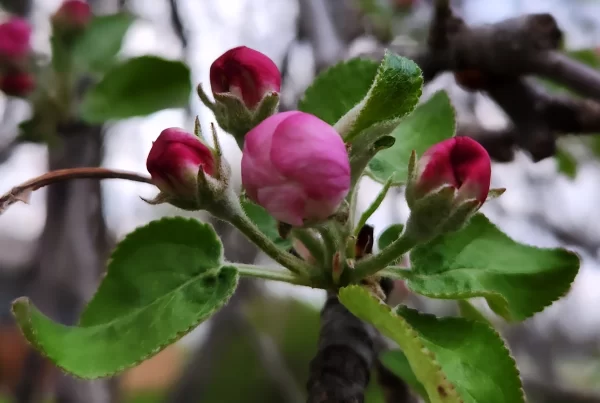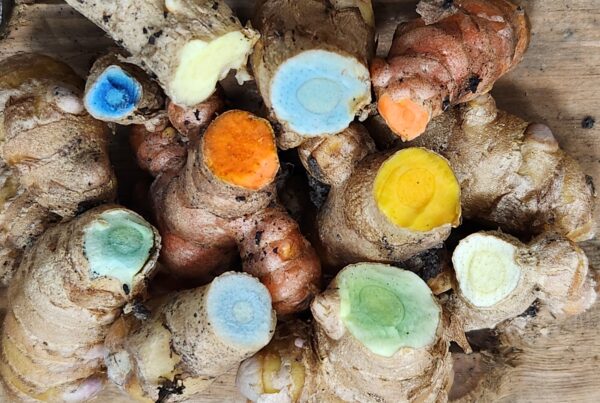If you read my previous post on massacring hemlock, you will remember that I became the owner of a large poison hemlock grove last year. Given children and animals roam the land, I wanted to kill the hemlock organically. I attempted to cut it down, but many second-year plants had set seed by the time I found them. Although this endeavor was somewhat successful, many seeds fell on the lawn in the process. This spring I observed a somewhat smaller, but still large, grove near the river.
Most websites on killing hemlock suggested using an herbicide that containing glyphosate. I considered the absurdity of killing a poisonous plant with poison. Was there a way to kill hemlock organically? My summer quest was born- to eradicate the hemlock using organic methods alone.
Digging Hemlock
The only organic option offered on most sites is digging the hemlock with a shovel. This works best for first-year plants, before the roots are large and established. Hemlock roots on second-year plants are thick and buried deeply in the ground.

I decided it was worth a try anyway. However, when I attempted to dig up second-year hemlock plants, I was exhausted after pulling out four. The above picture is of a second-year hemlock plant I dug that had previously been mowed over and sent out new leaves. Perhaps the most athletic of readers would enjoy this challenge. I decided there was no way I could eradicate my hemlock grove this way.
Homemade Weed Killer
After complaining to my father, he suggested I try the homemade weed killer that he uses:
1 gallon of vinegar
1 cup of table salt
2 tablespoons of dish soap
I filled my sprayer with this mixture and coated the leaves of young rosettes and established hemlock plants. Originally, I was pleased. The leaves turned brown and wilted. However, within 1-2 weeks, both the first and second-year plants sent out new leaves. (See below pictures for original plant prior to spraying, then for new leaves emerging a week after being sprayed).
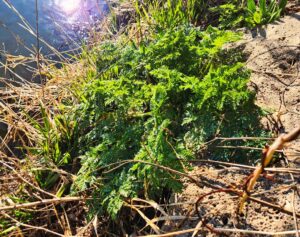
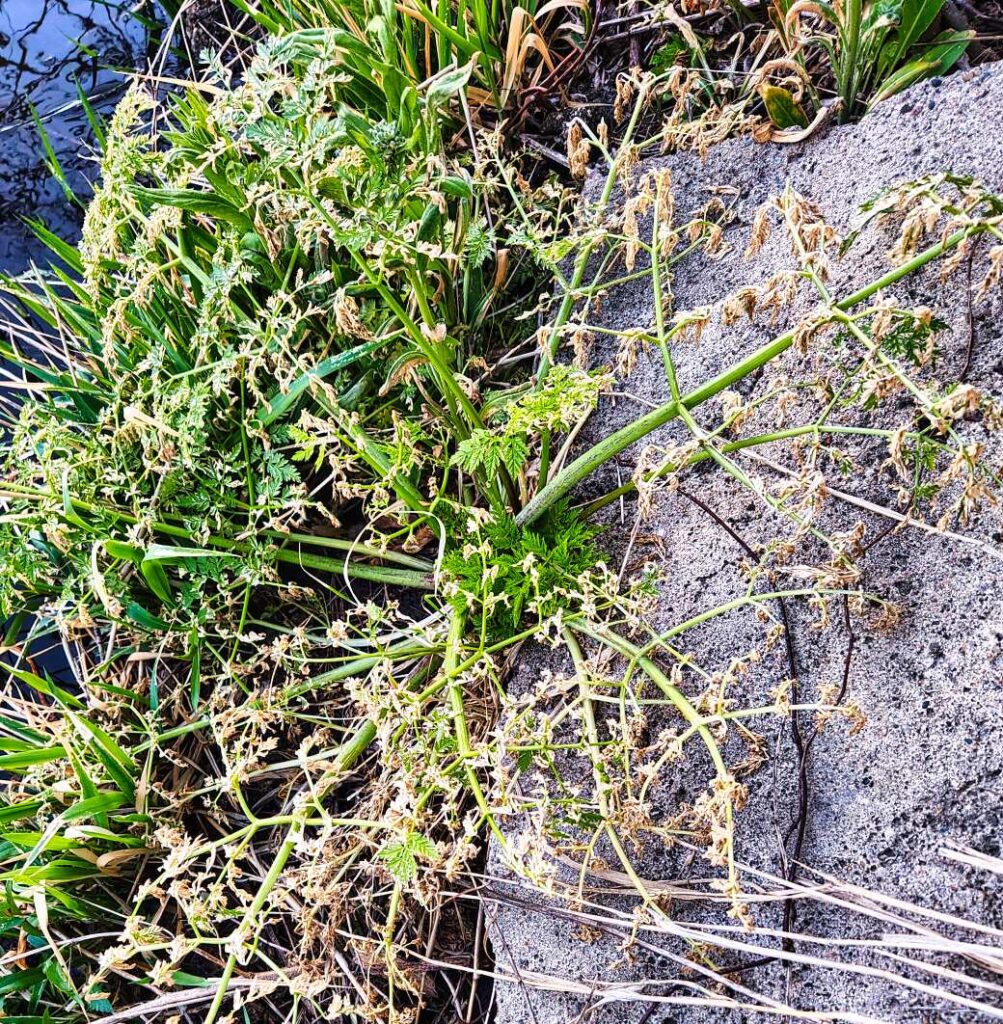
Theoretically, you could eventually deplete its energy resources through this method. However, it is certainly not an efficient way to kill hemlock. The below pictures show hemlock that I had mowed over with a riding mower and sprayed with the homemade weed killer. Note hemlock’s hollow stem and quick re-growth of foliage after initial foliage death from the spray.
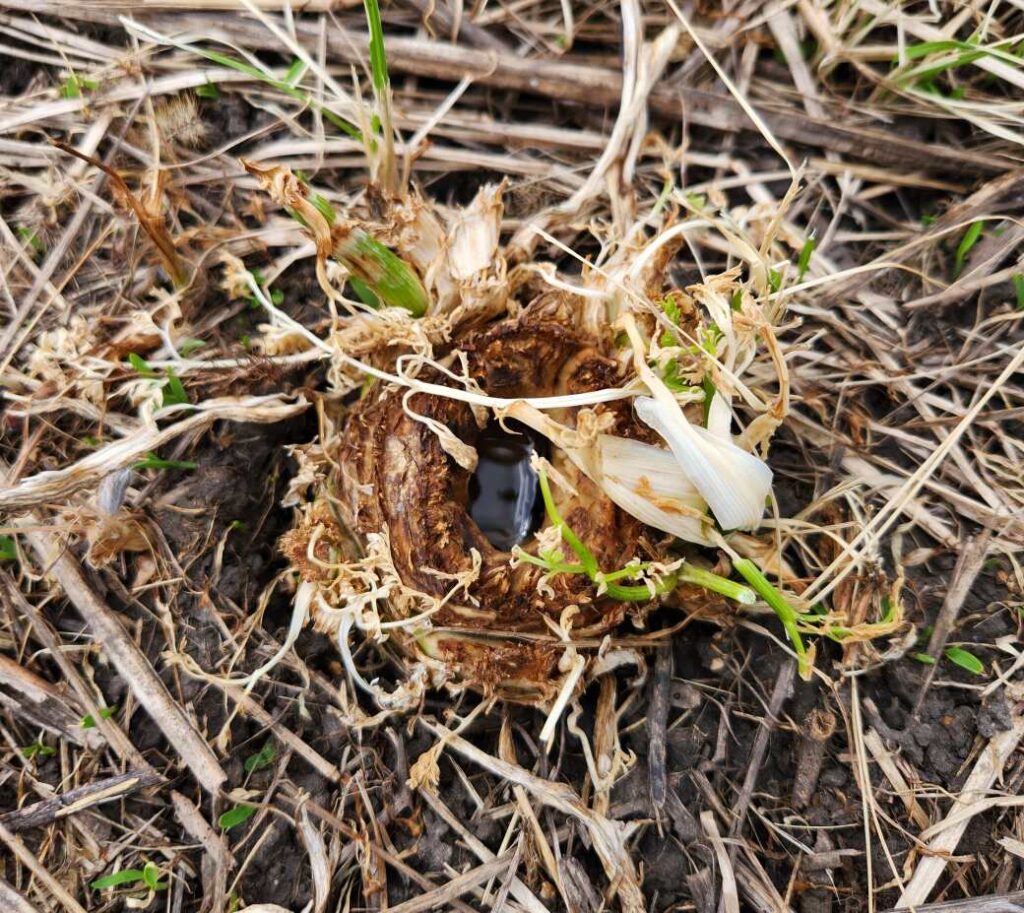
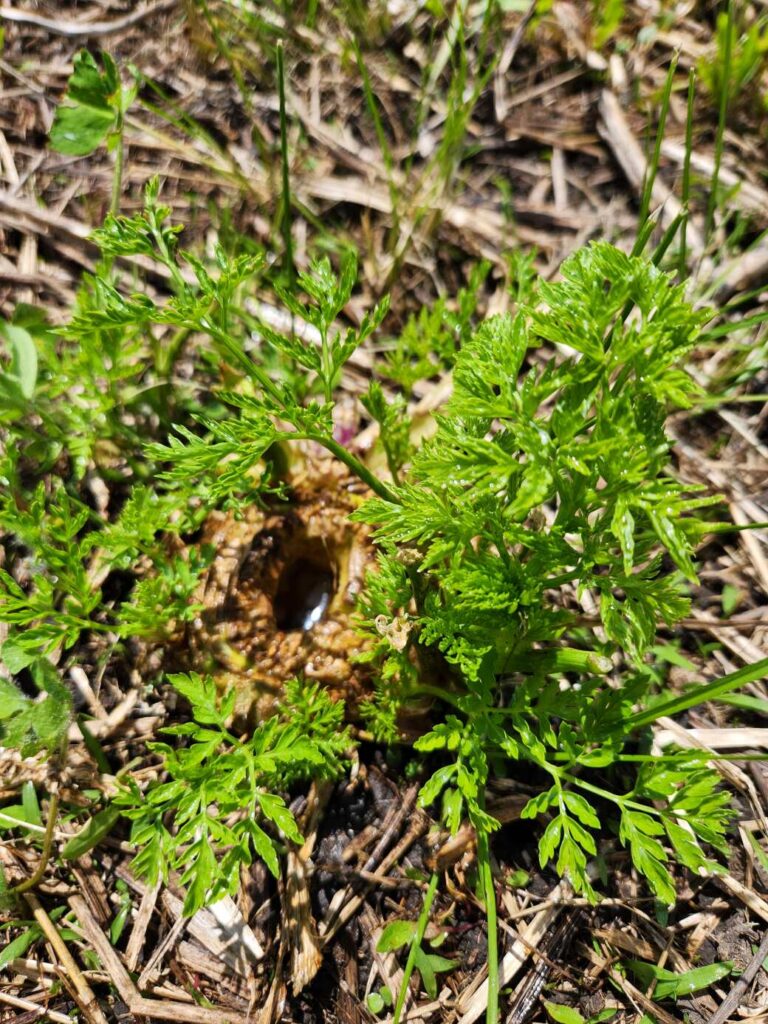
Please note: To my dad’s credit, this homemade week killer does work great on many small annual weeds!
Organic Herbicide
Fortunately, I recalled that a co-worker had previously mentioned that her husband sells an organic herbicide. By June, I convinced myself to give him a call. I learned that his product, Contact Organics, has over 90% efficacy with hemlock, even second-year plants that are several feet tall. I decided to give it a try.
It is notable that second-year hemlock plants produce seeds and the first-year plants do not. Given mine were already flowering, I focused on the second-year plants. The young hemlocks could wait.
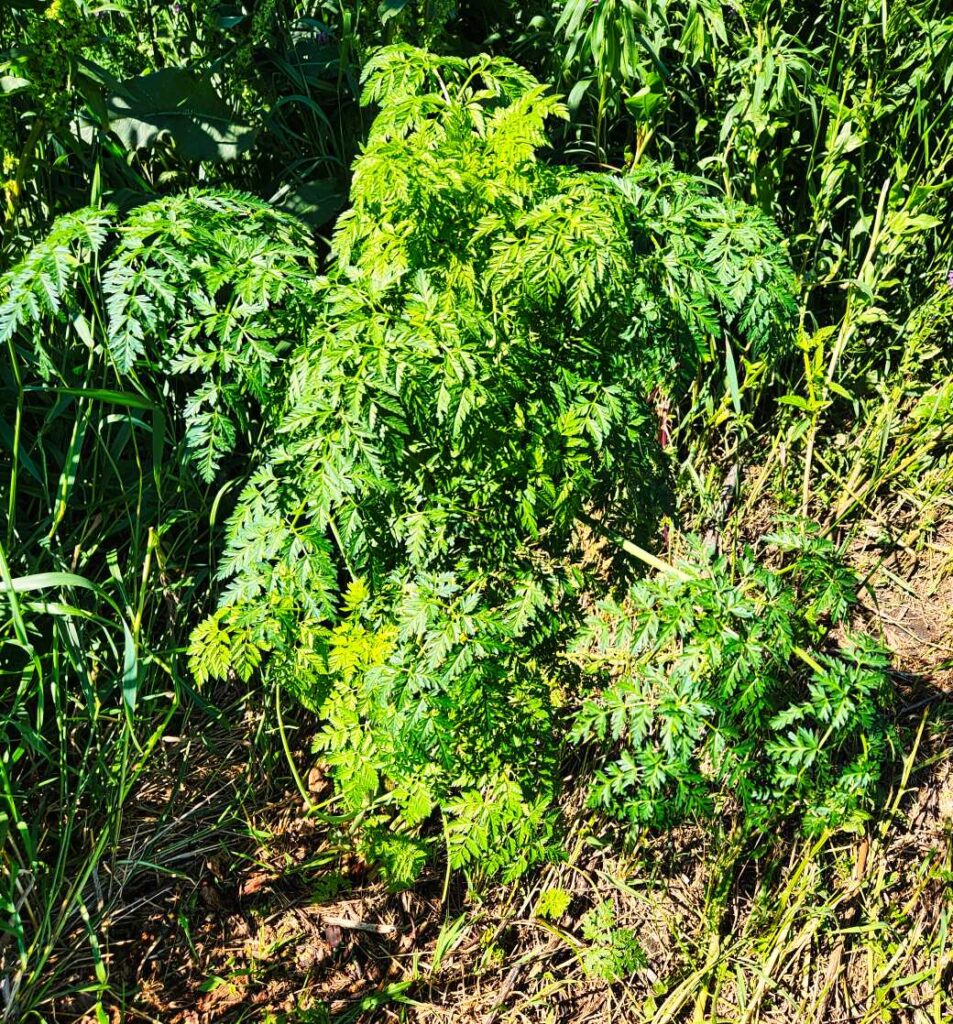
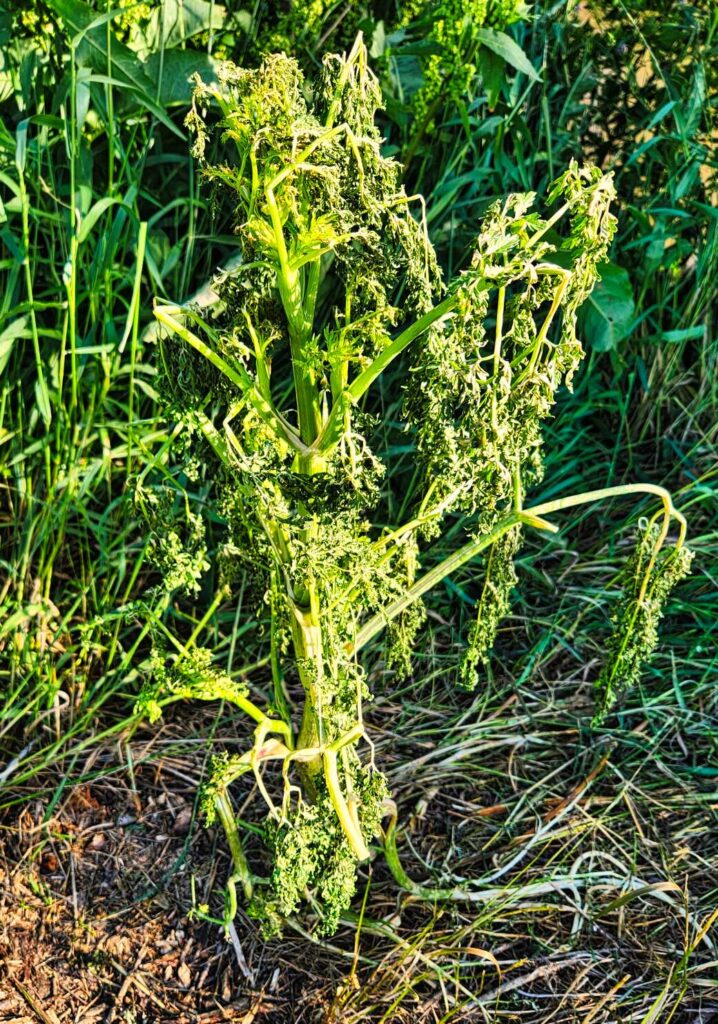
This herbicide killed the hemlock quickly. The above pictures of the same plant were taken less than an hour apart. It did take a bit of time to achieve the needed full coverage of the tallest plants. (Many of were 7 to 8 feet tall). The time needed decreased when I ditched my cheap sprayer and bought a higher quality one. I eventually noted it was faster to cut the hemlock plants at the bottom of the stem and then fill the hollow stems with the herbicide.
Prior to leaving for a family vacation, I checked on the hemlock grove. Both options had produced good results (covering the whole plant OR cutting and filling the stems). The plants remained dead-looking, and no new shoots or leaves had formed. Satisfied, I vowed to spray the young hemlocks when we returned.
The Flood
We arrived home on a Friday evening, and I was pleased that the large hemlocks still seemed dead. By the next morning, though, the entire back half of our property was underwater thanks to a record-breaking flood. We joked that we had inherited waterfront property.
Once the water receded, I did not find any traces of the first-year hemlock. I found this surprising, given poison hemlock often grows near water. None seem to have sprung back up, almost two months after the flood. Perhaps any flooding of a similar duration (approximately 48 hours underwater) will kill hemlock. All plants have a certain level of flood tolerance, although I have yet to find information on what this is for hemlock. Most information on flood tolerance is understandably for fruit and vegetable crops. It seems that flooding during high summer soil temperatures decreases a plant’s ability to survive flooding.
On the other hand, it is possible that the flooding alone did not kill the remaining hemlock. Perhaps the flooding runoff included sewage, herbicides, or other chemicals that hemlock cannot tolerate. I have yet to see any sprouts from hemlock seeds either. Perhaps they were swept away… or maybe they are waiting to germinate in the spring? I did find a nice new patch of poison ivy where some of the hemlock had been, as well as the brown remains of the hemlock stalks I cut and sprayed.
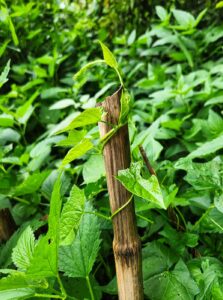
Organic Hemlock Control
In summary, it is possible to kill hemlock organically. Rated from best to worst:
BEST- The organic weed killer from Contact Organics killed even giant second-year hemlock. This solution killed poison hemlock quickly without the need for heavy manual labor. As noted above, some time can be saved with the largest plants by filling the hollow stem with the herbicide rather than achieving full coverage.
WORST- Although the homemade weed killer initially appeared successful, it only burned the foliage. Some first-year plants were killed in this way, but many sent out new leaves quickly. No second-year plants were killed with this homemade option; all sent out new leaves within 1-2 weeks after application.
IN BETWEEN- This option is definitely the worst for your shoulders and back. If your hemlock are small in size and amount, digging them out works well. However, if your hemlock are large, you will be exhausted quickly. Not recommended for large hemlock groves or for second-year plants.
YET TO BE DETERMINED- Flooding also seems to kill poison hemlock… although this is not a reliable nor recommended method. The jury is out on whether this method has completely eradicated my hemlock grove or if it will be return with a vengeance. I’ll post an update next season!
UPDATE- second-year roots were not killed. I have had to dig these out this season!

